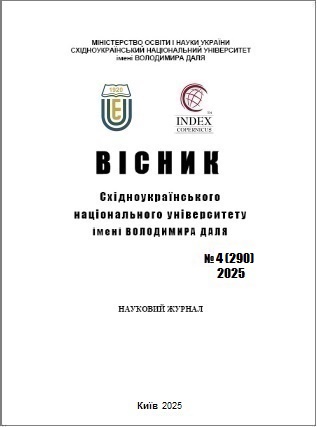Study of the stress-strain state of the elements of the annular preventor
DOI:
https://doi.org/10.33216/1998-7927-2025-290-4-41-47Keywords:
well construction, anti-fallout equipment, fluid manifestation, annual preventer, simulation modeling, stress-strain state, stress, contact pressureAbstract
The article considers the role and design features of blowout prevention equipment, in particular the annular preventer, which is used during the drilling of oil and gas wells. The casing and drilling string separate the wellbore, and the annular gap between them is filled with drilling fluid, which creates hydrostatic pressure to control the release of formation fluids. The annular preventer, as a part of blowout prevention equipment, provides sealing of the annular space, allowing simultaneous rotation and threading of drill pipes, which increases the safety and efficiency of the drilling process. The work also provides information related to the analysis of foreign and domestic research and publications on the topic of the study. The main working element in the design of the annular preventer is an annular rubber seal, which is subjected to cyclic loads and fatigue failure due to the passage of the drilling string through it. However, the body and piston of the annular preventer are subjected to high pressure, which leads to the emergence and concentration of significant stresses in certain areas. In order to determine the magnitudes and zones of stress concentration, a three-dimensional model of an annual preventer was built. Only two of its elements were used for the study: the housing and the piston. The pressures used during the study were 14 and 70 MPa. The study took into account the gap between the housing and the piston. It was found that with small gaps between the piston and the housing under the adopted boundary conditions, their interaction occurs, as a result of which contact pressure appears. The maximum value of this pressure is 320 MPa with a gap between the working surfaces of the housing and the piston of 0.1 mm. With a gap of 0.4 mm and similar boundary conditions, contact pressure is not observed. Further increase in the gap may lead to faster failure of the sealing collars. The work emphasizes the importance of monitoring the technical condition of annular preventers and the accuracy of their repair to ensure the safety of workers and prevent emergencies during the drilling of oil and gas wells.
References
1. Jon Espen Skogdalen, Ingrid B. Utne, Jan Erik Vinnem, Developing safety indicators for preventing offshore oil and gas deepwater drilling blowouts. Safety Science. 2011. Vol. 49. Iss. 8-9. P. 1187-1199. ISSN 0925-7535. URL: https://doi.org/10.1016/j.ssci.2011.03.012.
2. Bubbico R.; Lee S.; Moscati D.; Paltrinieri N. Dynamic assessment of safety barriers preventing escalation in offshore Oil&Gas. Saf. Sci. 2019. Vol. 121. P. 319-330.
3. Necci A., Tarantola S., Vamanu B., Krausmann E., Ponte L. Lessons learned from offshore oil and gas incidents in the Arctic and other ice-prone seas. Ocean. Eng. 2019. Vol. 185. P. 12–26.
4. Guo Lianglin, Zeng Yijin, Huang Jian, Wang Zhiliang, Li Junxiong, Han Xueying, Xia Chengyu, Qian Liqin. Fatigue Optimizationof Rotary Control Head Rubber Core Based on Steady Sealing. Engineering Failure Analysis. 2021. Vol. 132. art. 105935. URL:https://doi.org/10.1016/j.engfailanal. 2021. art. 105935.
5. Li Wang, Tang Yang, Liu Qingyou, He Yufa. Simulation and experimentalanalysis of critical stress regions of deep-water annular blowout preventer. Engineering Failure Analysis. 2019. Vol. 106. art. 104161. URL: https://doi.org/10.1016/j.engfailanal.2019.104161
6. Li Wang, Tang Yang, Liu Qingyou, He Yufa. Simulation and experimental analysis of critical stress regions of deep-water annular blowout preventer. Engineering Failure Analysis. 2019. Vol. 106. art. 104161. URL: https://doi.org/10.1016/j.engfailanal.2019.104161.
7. Dassault Systemes. Theoretical Manual Solid-Works Simulation. Dassault Systemes, 2015. 114 p

